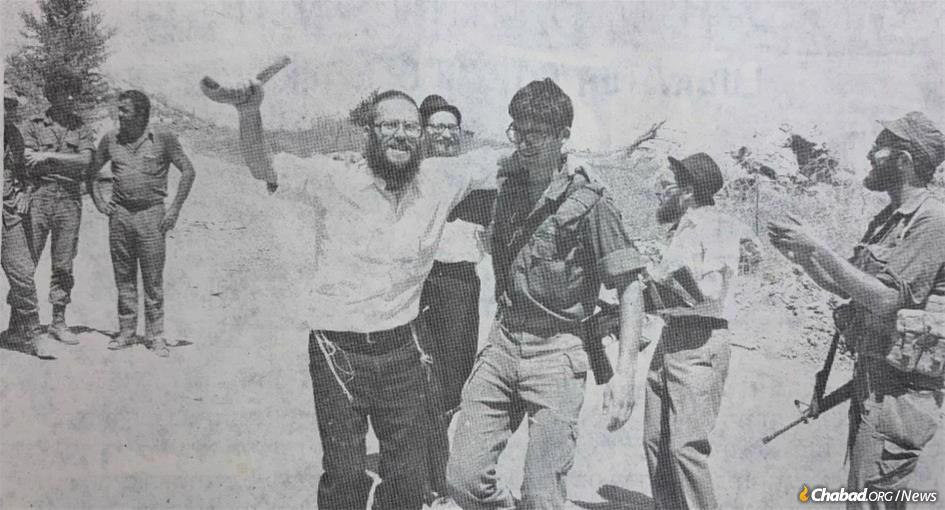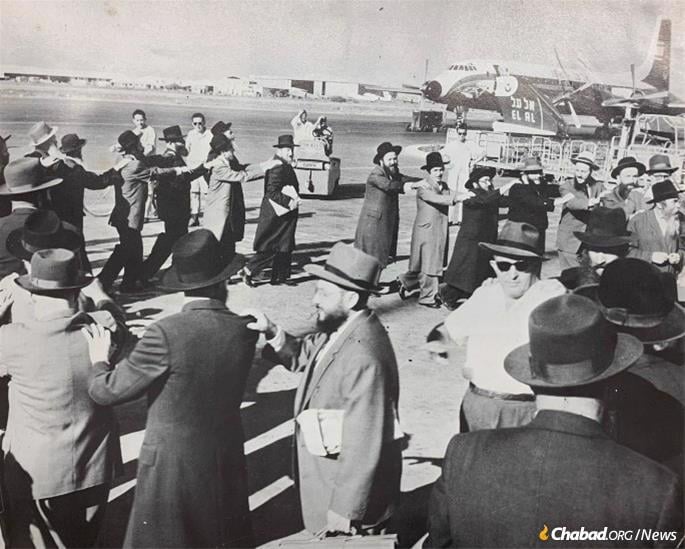The shofar, the ancient curved instrument, has symbolised the High Holidays, inaugurating the Jewish New Year since the beginning of Jewish history. Traditionally crafted from a ram’s horn, though sometimes from other kosher animal horns, its resounding blast in synagogues on Rosh Hashanah remains the focal point of the service. Even when the COVID-19 pandemic disrupted synagogue gatherings worldwide, Chabad-Lubavitch found a way to ensure that the sacred sounds of the shofar reached Jews everywhere. This remarkable practice, known as bringing the shofar to the streets, predates the pandemic and continues to resonate with Jews worldwide.

The Shofar Campaign, which emerged from the visionary leadership of Rabbi Menachem M. Schneerson, of righteous memory, began precisely 70 years ago, just prior to Rosh Hashanah in 1953 (5714). At that time, the concept of taking Judaism to the streets was almost unheard of. The Shofar Campaign was, in a sense, a pioneering initiative that paved the way for numerous mitzvah campaigns to follow.
Young Chabad rabbinical students armed with shofars ventured onto the streets of Brooklyn, New York, and the impact was immediate and profound. They would set out early in the morning, even before prayer services, visiting parks, street corners, hospitals, prisons, elder-care facilities, military bases, and virtually anywhere they could find people. In those days, the length and breadth of Eastern Parkway in Brooklyn was predominantly Jewish, making it easy to connect with receptive individuals.

The reactions they received were often astonishing. Elderly Jewish men who had long forgotten about the shofar were reminded of its significance. Others believed they were too old to partake in such a tradition, to which the young Chabad emissaries responded with reassurance, inviting them to recite the blessing and partake in this age-old ritual.
Their outreach extended beyond parks and public spaces; hospitals became a significant part of their itinerary. St. John’s Hospital (later merged with Brooklyn Jewish Hospital to form Interfaith) and Kings County Hospital were among the locations they visited. Blowing the shofar in the streets was an entirely novel concept, one that challenged convention.
At the time, Crown Heights was an upper-middle-class Jewish neighborhood, and most Chassidim resided in the nearby Brownsville area. As they commuted to and from the Rebbe’s synagogue, they would enter Jewish-owned stores along Pitkin Avenue to blow the shofar for shopkeepers.
The fundamental idea behind the Shofar Campaign was to bring the spiritual and emotional apex of Rosh Hashanah to every Jew, regardless of their circumstances. Remarkably, this vision has remained largely unchanged over the decades.
According to Rabbi Yehuda Krinsky, who participated in the campaign, the approach to reaching Jews in the streets, parks, and hospitals of Brooklyn remains strikingly similar to what it is today. While there were fewer yeshivah students and Chabad emissaries at the time, the core mission remained consistent.
The Rebbe, Rabbi Menachem M. Schneerson, emphasized the importance of the shofar’s role in coronating G‑d Almighty as king of the universe. In a letter dated September 1958, he responded to a hospital chaplain’s gratitude for sending students to blow the shofar for patients. The Rebbe expressed that by sounding the shofar, G‑d’s benevolence would be invoked for the benefit of the health of both body and soul. Blowing the shofar wasn’t just a spiritual endeavor; it had a profound healing effect on those in hospitals.
The goal of the Shofar Campaign was clear: to offer every single Jew, regardless of age or circumstance, the opportunity to hear the stirring call of the shofar. This practice also aligned with the prophetic vision of Isaiah, anticipating the day when the “great shofar shall be sounded” with the arrival of Moshiach. Simultaneously, it brought solace and spiritual rejuvenation to those confined to hospital beds.
In essence, the Shofar Campaign, which began seven decades ago, set the stage for Chabad-Lubavitch’s ongoing commitment to bringing Jewish traditions and spirituality to every corner of the world, ensuring that no Jew is left behind during the High Holidays or any other occasion.


